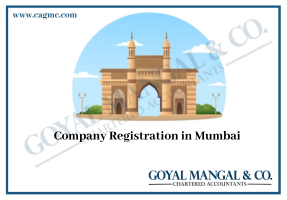Definition
According to Companies Act, 2013 section 2(37) ESOP means ‘the option given to the directors, officers or employees of a company or of its holding company or subsidiary company or companies, if any, which gives such directors, officers or employees, the benefit or right to purchase, or to subscribe for, the shares of the company at a future date at a pre- determined price’.

Employees Stock Option Plan (ESOP) is an employment scheme for the benefit of employees of companies. Under the Employees Stock Option Plan employees are given shares at a price lesser than the market rate of those shares to encourage them to acquire ownership of company in the form of these shares.
Employees Stock Option Plan (ESOP) acts as a legal documentary proof that the employees will be rewarded for their performance and it also encourages employees to work for organisational and personal goals effectively and efficiently.
What are the advantages of Employees Stock Option Plan?
The various merits of Employees Stock Option Plan (ESOP) are as follows:
- Tax deductible benefits as the owner of the stock can sell the shares to employees for free.
- Increase flexibility to the owner.
- There has been a ready market and buyers of shares.
- It gives an opportunity to corporations to pay without a reduction in book profits.
- Motivate employees to become more productive.
- Increase in customer loyalty.
- Reduces staff turnover.
- Enhances job satisfaction among employees.
What are the disadvantages of Employees Stock Option Plan?
The various demerits of Employees Stock Option Plan (ESOP) are as follows:
- This involves cost related with establishment and administration of the ESOP.
- The share price can decrease and this can impact the value of the holding for an employee.
- After issuance of ESOP the shareholding gets diluted.
- Increase in chances of disputes while transfer of shares and the value of shares which should be transferred.
What are the documents required for drafting an ESOP?
The documents required for drafting an ESOP are as follows:
- Information of employee and employer.
- Information about the shares to be issued and eligibility of the employees for the scheme.
- Any other information as required.
What is the procedure for drafting an ESOP scheme?
When all the information as required, is received the lawyer will draft the ESOP scheme for the company. The draft will be first shared by the company if any change is required and once the changes are made, if any, then the scheme will be approved.
The lawyer will share the final draft of the Employees Stock Option Plan.
What are the different types of ESOPs?
The different types of ESOPs are as follows:
- Employee stock purchase plan.
- Employee stock option plan.
- Phantom Equity Plan (PEP)/ Stock Appreciation Right (SAR).
- Restricted stock unit (RSU).
- Restricted stock award (RSA).
Who can issue ESOP and how?
- Unlisted company: Private companies by way of ordinary resolution.
- Unlisted public company: Unlisted public company by way of Special resolution.
- Listed company: In case, shares are listed, the company has to follow SEBI ESOP guidelines as well along with the provisions of the Companies Act, 2013.
To whom ESOP can be issued?
- ESOP can be issued to permanent employees of the company who have been working for the company in India or outside India or of a holding company of the company.
- ESOP can be issued to a director of the company excluding an independent director, who has been working for the company in India or outside India or of a holding company of the company.
To whom ESOP cannot be issued?
- An employee who is a promoter or a person belonging to the promoter group.
- A director who either himself or through his relative or through anybody corporate, directly or indirectly, holds more than 10% of the outstanding equity shares of the company.







